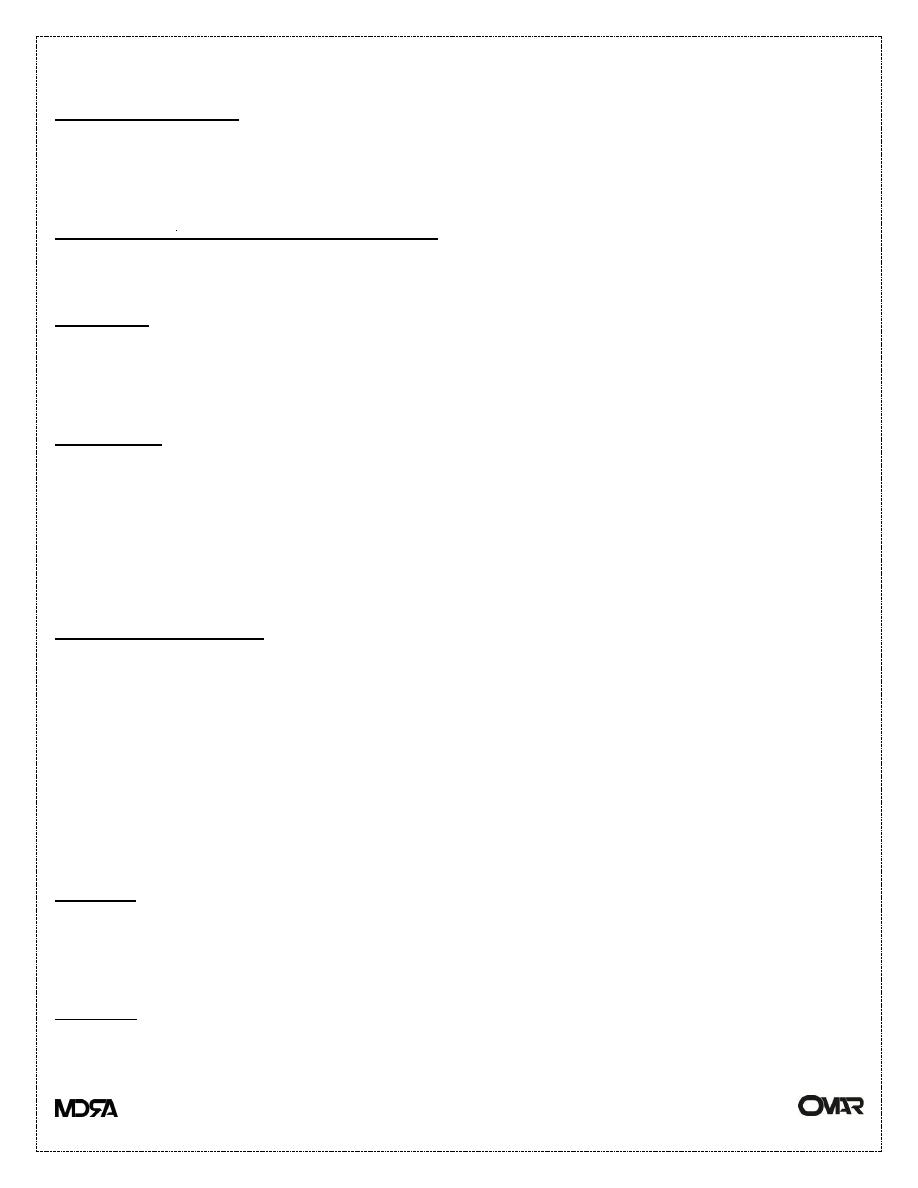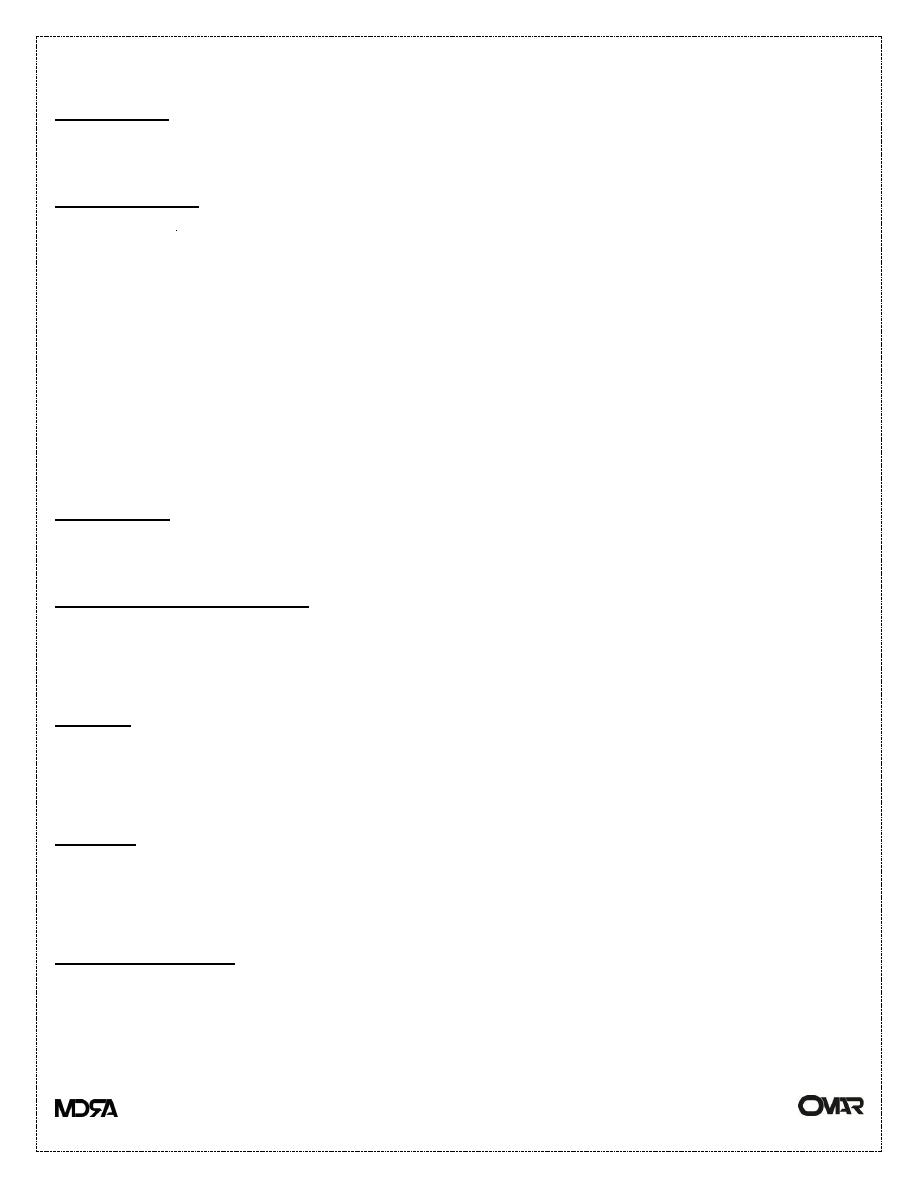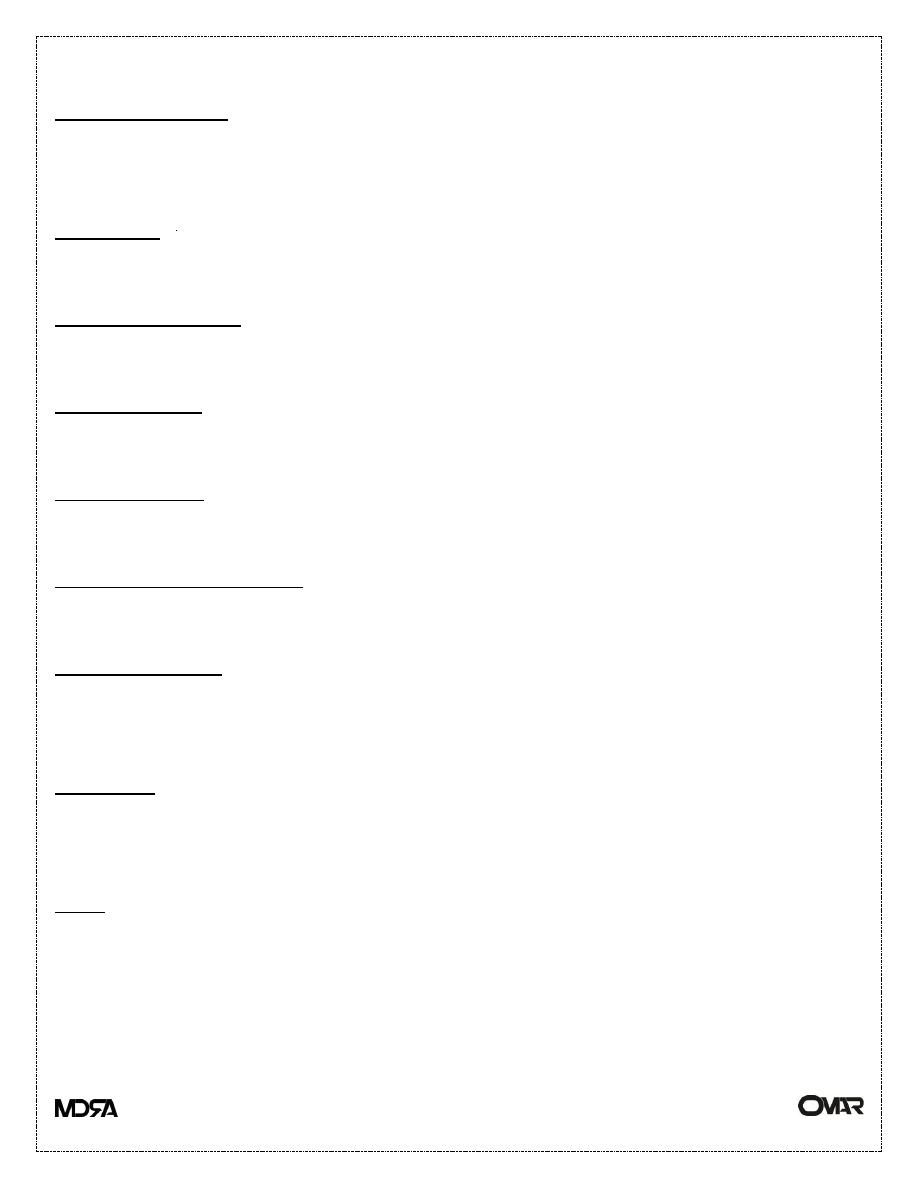
Lecture 1 PHARMACOLOGY
Dr.Hassan
Page | 1
Important Pharmacological Terms
Pharmacokinetics
It is the study the effects of body on drugs . It includes the study of
absorption, distribution, biotransformation and excretion of drugs
Absorption
The movement of a drug from its point of entry into the body into systemic
circulation
Active transport
Transport against concentration gradient
Bioavailability means
Fraction of an uncharged drug reaching the systemic circulation following
any route of administration
Drug distribution
The transport of a drug in the body by the bloodstream to its site of action
Volume of Distribution (Vd)
Volume of distribution (Vd) is the ratio between the amount of drug in body
(dose given) and the concentration of the drug (C) measured in blood or
plasma.
Elimination Half-life
Elimination Half-life: (t1/2) is the time required to decrease the amount of
drug in body by 1/2 during elimination
First Pass Effect
Drug metabolism may occur in the intestinal wall or liver enzymes, before
reaching systemic circulation

Lecture 1 PHARMACOLOGY
Dr.Hassan
Page | 2
Biotransformation
The process by which drugs are inactivated and transformed into a form that
can be eliminated from the body
Metabolic transformation (phase 1) is:
Transformation of substances due to oxidation, reduction or hydrolysis
Excretion
Primarily accomplished through the kidneys but may also involve the liver,
the lungs, intestines, sweat and mammary glands
Receptors:
Specialize target molecules on the cell surface or intracellularly that the drug
binds to and exerts it effect through.\ Or
Active macromolecular components of a cell or an organism which a drug
molecule has to combine with in order to elicit its specific effect
-Pharmacodynamics:
It is the study the effects of drugs on body
It involves the study of following
1. Biological and therapeutic effects of drugs
2. Mechanisms of drug action
3. Drug interactions
Affinity:
It is the tendency of a drug to associate with its receptor. It is a measure of
how tightly a drug binds to a receptor
Agonist:
It is a drug that binds to the receptor and produces a biological response

Lecture 1 PHARMACOLOGY
Dr.Hassan
Page | 3
Full agonist
It is an agonist that can produce maximal effects and has high efficacy
Partial agonist
It is an agonist that can produce submaximal effects and has moderate
efficacy
A competitive antagonist
It is a substance that binds to the same receptor site and progressively
inhibits the agonist response
Agonist-antagonist is the substance binding to one receptor subtype as an
agonist and to another as an antagonist
Antagonist:
It is a drug that binds to the receptor but no biological response is produced
ED50 “effective dose 50”:
The dose of the drug that produces a response equal to 50 % of the
maximum response.
Efficacy
It is the maximal response produced by the drug. It depends on the number
of drug-receptor complexes formed.
Potency
It is a measure of how much of a drug is required to elicit a given response.
The lower the dose required for a given response, the more potent the drug
Therapeutic index
It is the ratio of LD50 (the dose which is lethal to 50% of experimental
animals) to ED50 (the dose that gives the desired response in 50% of
experimental animals).

Lecture 1 PHARMACOLOGY
Dr.Hassan
Page | 4
= LD50 / ED50
Therapeutic index is a measure of drug safety, thus the higher the index the
safer is the drug.
Idiosyncrasy:
It is an abnormal response to the therapeutic dose of the drug because of
genetic difference in metabolism.
It is reaction to a drug that is significantly different from what is expected
Hypersensitivity:
Abnormal response to the therapeutic dose of the drug because of antigen-
antibody reaction
Tolerance:
Effect of drug gradually decreases when given continuously or repeatedly
Potentiation
The enhancement of a drug’s effect by another drug
Refractory
The failure of a patient to respond as expected to a certain medication
Synergism
The combined action of 2 or more drugs that is greater than the sum of the
2 drugs acting independently
Cumulative action
An increased effect caused by multiple doses of the same drug
Additive effect
If two drugs with the same effect, taken together, produce an effect that is
equal in magnitude to the sum of the effects of the drugs given individually

Lecture 1 PHARMACOLOGY
Dr.Hassan
Page | 5
Therapeutic dose
It is the amount of a substance to produce the required effect in most
patients
Toxic dose
It is the amount of a substance to produce effects hazardous for an organism
Teratogenic action
It is a negative action on the fetus causing fetal malformation
Hepatotoxicity
It is toxic action on the liver
Nephrotoxicity
It is toxic action on kidney
Pharmacological actions:
These are the effects of the drug on the body.
Contraindication
Specific sign, symptom, or circumstance in which it would be inappropriate
or harmful to administer a drug
Indication
Specific sign, symptom, or circumstance that makes it appropriate to
administer a drug
Dose
The dose refers to the amount of drug to be administered. Adult and
pediatrics patients may have two different doses of the same drug.
